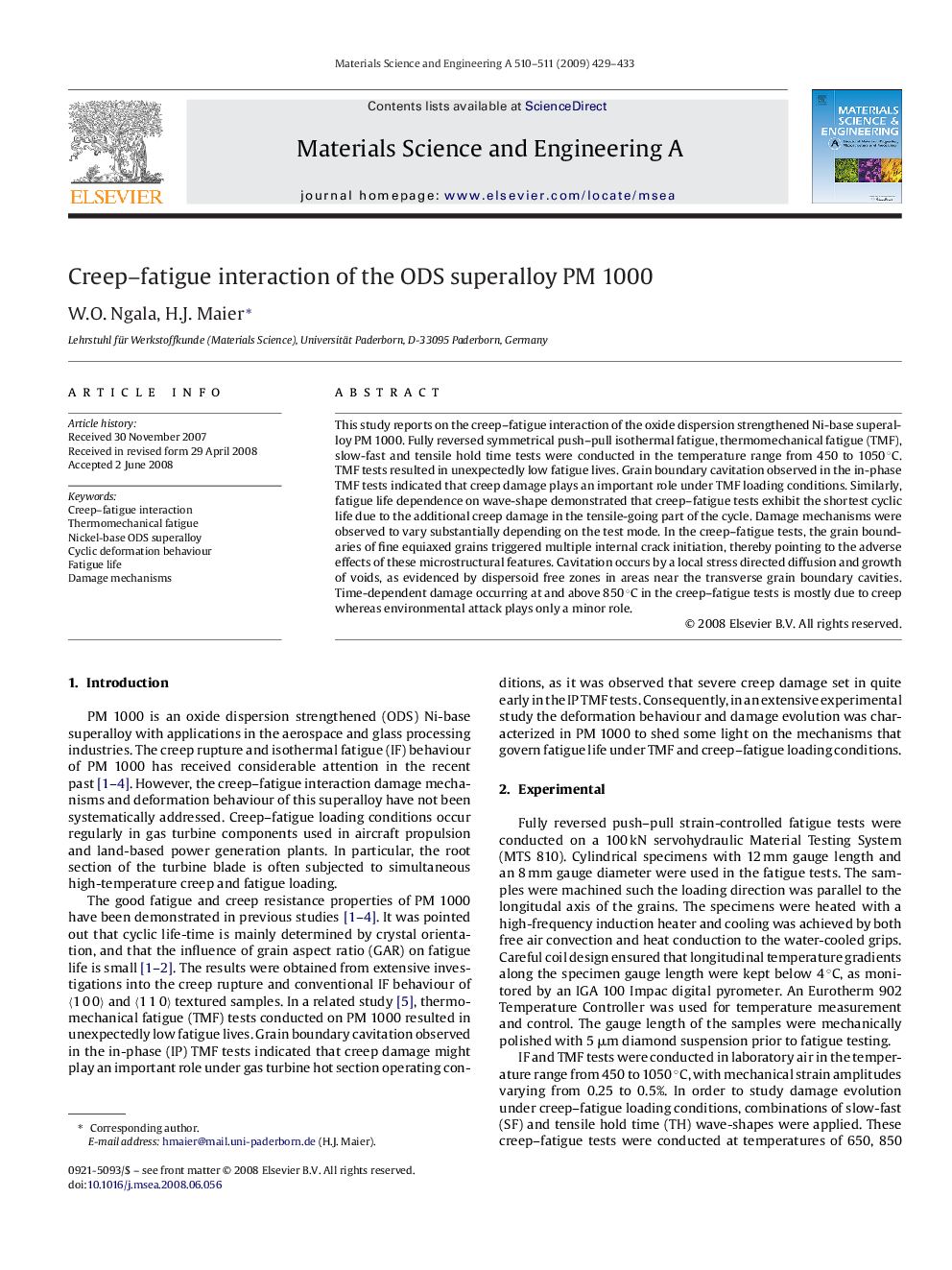| Article ID | Journal | Published Year | Pages | File Type |
|---|---|---|---|---|
| 1580803 | Materials Science and Engineering: A | 2009 | 5 Pages |
Abstract
This study reports on the creep-fatigue interaction of the oxide dispersion strengthened Ni-base superalloy PM 1000. Fully reversed symmetrical push-pull isothermal fatigue, thermomechanical fatigue (TMF), slow-fast and tensile hold time tests were conducted in the temperature range from 450 to 1050 °C. TMF tests resulted in unexpectedly low fatigue lives. Grain boundary cavitation observed in the in-phase TMF tests indicated that creep damage plays an important role under TMF loading conditions. Similarly, fatigue life dependence on wave-shape demonstrated that creep-fatigue tests exhibit the shortest cyclic life due to the additional creep damage in the tensile-going part of the cycle. Damage mechanisms were observed to vary substantially depending on the test mode. In the creep-fatigue tests, the grain boundaries of fine equiaxed grains triggered multiple internal crack initiation, thereby pointing to the adverse effects of these microstructural features. Cavitation occurs by a local stress directed diffusion and growth of voids, as evidenced by dispersoid free zones in areas near the transverse grain boundary cavities. Time-dependent damage occurring at and above 850 °C in the creep-fatigue tests is mostly due to creep whereas environmental attack plays only a minor role.
Keywords
Related Topics
Physical Sciences and Engineering
Materials Science
Materials Science (General)
Authors
W.O. Ngala, H.J. Maier,
